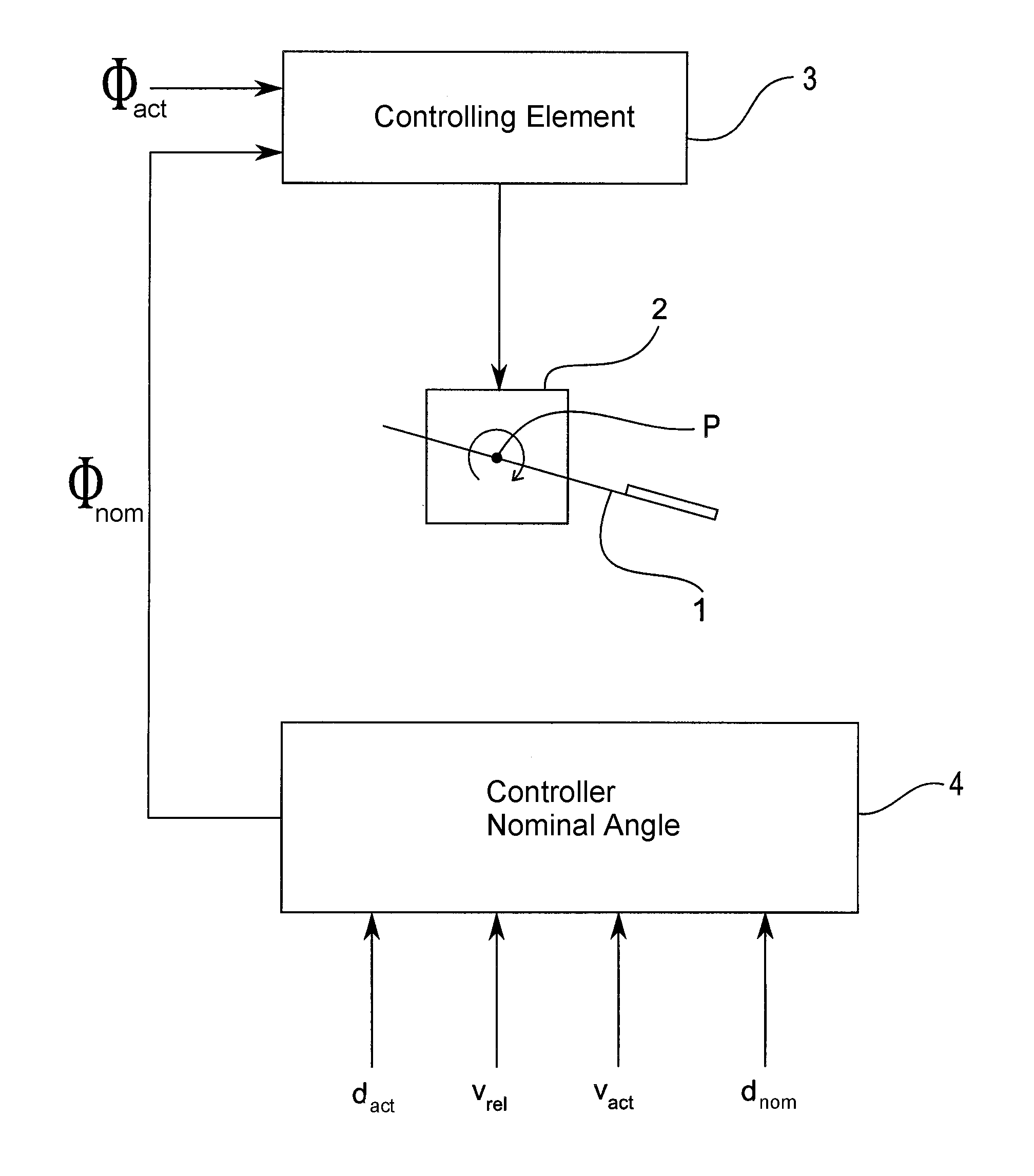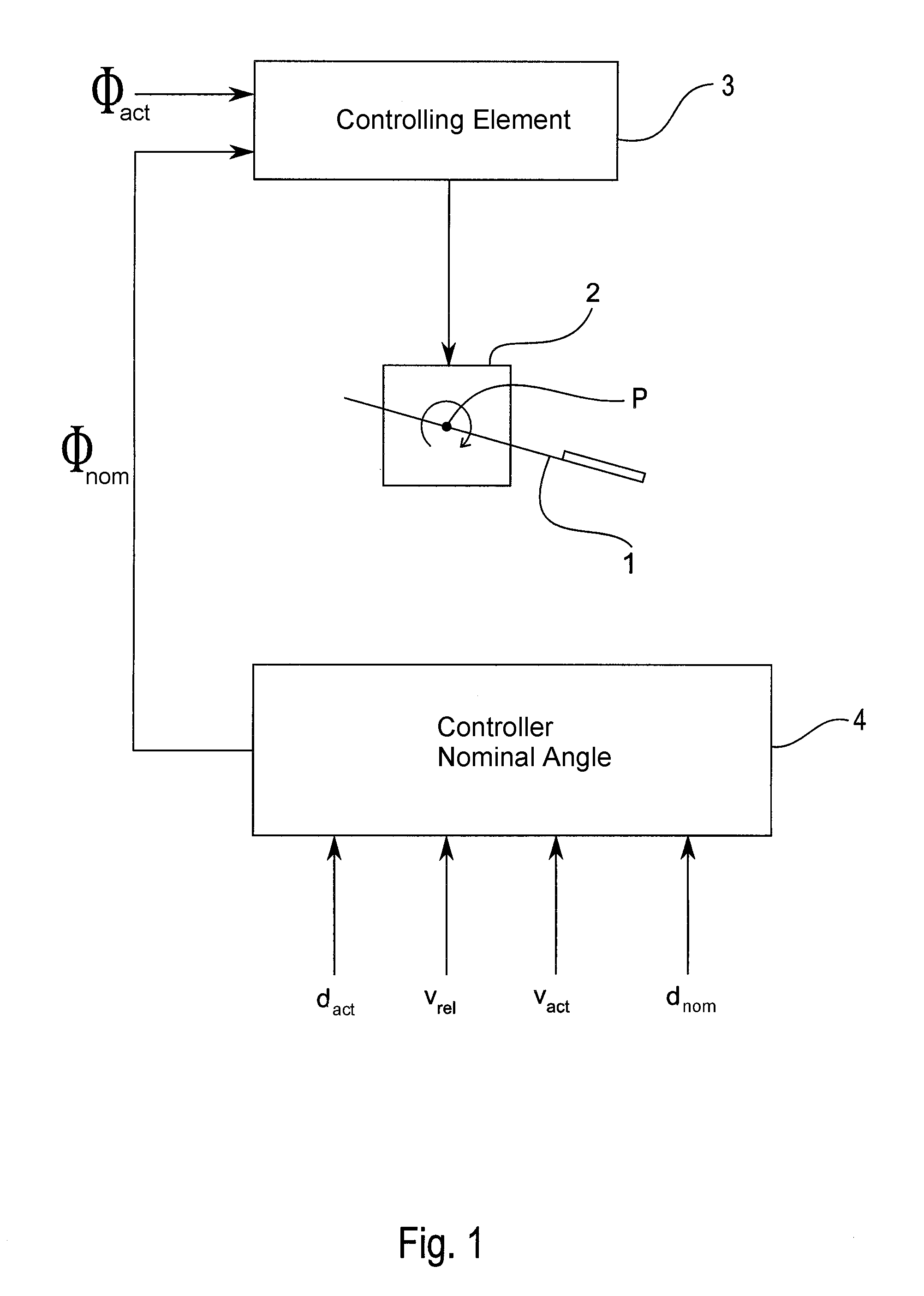Accelerator Force Feedback Pedal (AFFP) as Assistance System for Distance Control in Traffic
a technology of acceleration force and feedback pedal, which is applied in the direction of braking system, process and machine control, instruments, etc., can solve the problems of increasing complexity and expens
- Summary
- Abstract
- Description
- Claims
- Application Information
AI Technical Summary
Benefits of technology
Problems solved by technology
Method used
Image
Examples
Embodiment Construction
[0036]Elements of the following embodiments, which correspond to one another or which are identical, are in each case identified below with the same reference numerals.
[0037]FIG. 1 shows a block diagram of a control system according to an embodiment of the invention. In the illustrated embodiment, the accelerator device 1 is an accelerator pedal as is used, for example, in cars and trucks. The accelerator pedal shown is a so-called suspended accelerator pedal unit. In principle, the method described here can, however, also be applied to so-called stationary accelerator pedal units or twist-grip throttles.
[0038]FIG. 2 is a schematic view of an accelerator device, on which the method according to the invention can be performed. The accelerator device 1 shown in FIG. 2 is an accelerator pedal as used, for example, in cars or trucks. A pedal pad 5 is rotatably supported at a pivot point P via a pedal lever 6. The pedal lever 6 can be deflected downwards by applying pressure to the pedal...
PUM
 Login to View More
Login to View More Abstract
Description
Claims
Application Information
 Login to View More
Login to View More - R&D
- Intellectual Property
- Life Sciences
- Materials
- Tech Scout
- Unparalleled Data Quality
- Higher Quality Content
- 60% Fewer Hallucinations
Browse by: Latest US Patents, China's latest patents, Technical Efficacy Thesaurus, Application Domain, Technology Topic, Popular Technical Reports.
© 2025 PatSnap. All rights reserved.Legal|Privacy policy|Modern Slavery Act Transparency Statement|Sitemap|About US| Contact US: help@patsnap.com



